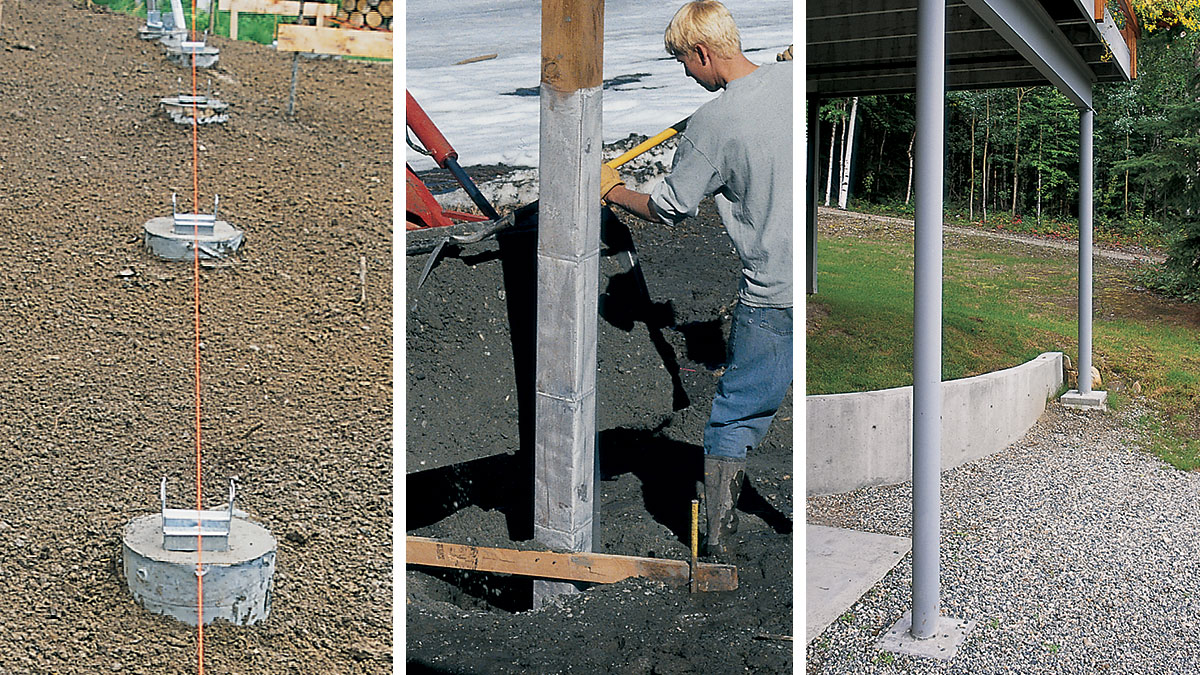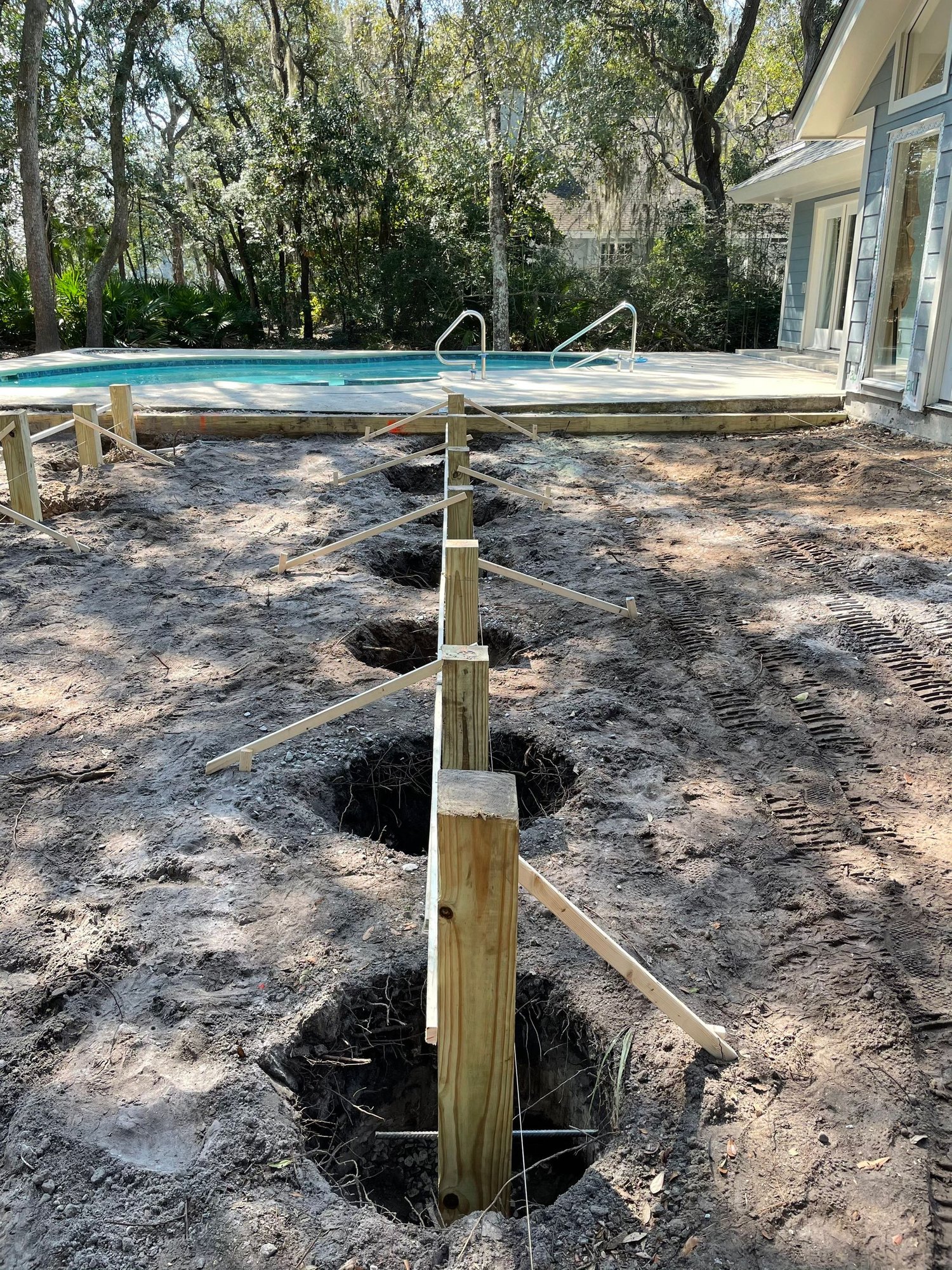Specialist Tips for Setting Up Deck Footings to Assistance Your Outdoor Space
When it comes to developing a deck, one of the most critical elements to take into consideration is the setup of correct footings. These grounds are the foundation upon which your outside room will certainly rest, supplying stability and assistance for years to come. What exactly does it take to set up deck footings correctly?
Relevance of Proper Deck Footings
Proper deck grounds are necessary for guaranteeing the security and durability of your exterior space. When creating a deck, it is important to focus on the structure on which it will certainly rest. Deck footings provide the necessary assistance for the whole framework and help disperse the weight equally - Deck Footings. Without solid and properly set up footings, your deck might end up being unstable, bring about safety hazards and expensive repair services.

In enhancement to security, appropriate deck footings additionally add to the durability of your exterior area (Deck Footings). Grounds that are created and constructed to hold up against the components and soil problems in your location will certainly help prevent the deck from shifting or resolving in time. By making sure the grounds are properly sized and installed, you can reduce the risk of damages to the deck structure, extending its life-span and lowering the need for expensive repairs or substitutes

Selecting the Right Kind Of Footings
When selecting the suitable sort of grounds for your deck, it is very important to think about elements such as soil conditions, regional building ordinance, and the total layout of your exterior room. The kind of footing you select will certainly play a vital role in making certain the stability and long life of your deck.
One common type of ground is the concrete ground. Concrete footings are ideal for many dirt problems and give exceptional support for decks.
Sometimes, you might need to utilize specific footings, such as pile grounds or deep foundations, if you are developing a multi-level or large deck. These grounds are designed to distribute the weight of the deck over a bigger area, ensuring security and avoiding sinking or clearing up.
Before selecting a kind of footing, it is important to speak with local building ordinance and laws to guarantee conformity. Additionally, consider the design and meant use of your exterior area. Elements such as the size, shape, and load-bearing needs of your deck will affect the type of footing that is most suitable.
Preparing the Ground for Footing Installment
To correctly prepare the ground for footing installment, it is important to examine the soil problems and take essential steps to make certain stability and longevity of the deck. The very first step is to dig deep into the area where the grounds will certainly be mounted.
When the area has actually been excavated, the following step is to portable the soil. This can be done utilizing a plate compactor or by utilizing a hand tamper. Condensing the dirt helps to get rid of any kind of voids or air pockets, which can cause settling and instability in time.
After condensing the dirt, it is necessary to lay a layer of gravel or crushed stone at the end of the excavation. This will provide drainage and aid to stop water from merging around the grounds, which can lead to disintegration and instability.
Step-by-Step Overview to Setting Up Deck Footings
After correctly preparing the ground for footing installment, the following step is to start the procedure of mounting deck grounds. This detailed overview will certainly give you with a clear understanding of how to mount deck grounds for your exterior room.
Determine the location: Start by marking the positions of the deck footings using risks and string. Make certain that the locations straighten with the layout and format of your deck.
Dig the openings: Make use of a blog post opening miner or an auger to dig the openings for the footings. The depth and diameter of the holes should remain in conformity with neighborhood building codes and the specific requirements of your deck design.
Level the holes: Utilize a level to make sure that the holes are dug to the proper deepness and are degree with each various other. (Deck Footings)
Add crushed rock: Area a layer of gravel at the end of each hole to improve drainage and prevent the timber from deteriorating.
Put the go to this website grounds: Put the footings right into the openings, seeing to it they are level and plumb. Use a level and a measuring tape to make sure precision.
Protect the footings: Put concrete right into the holes around the grounds, loading them to the top. Use a post degree to guarantee the footings continue to be level as the concrete collections.
Enable time for curing: Allow the concrete remedy according to the manufacturer's guidelines before continuing with the deck building and construction.
Typical Mistakes to Prevent During Footing Installment
One essential facet to think about during the setup of deck footings is preventing common errors that can compromise the security and long life of your outside room. While deck footings might appear like a uncomplicated and easy component of the construction procedure, overlooking specific variables can result in pricey repairs and prospective safety dangers down the line.

Furthermore, neglecting to mount proper water drainage steps can create water to build up around the grounds, resulting in rot, degeneration, and the eventual weakening of the deck's structure. Making use of the wrong kind of footing material or stopping working to appropriately secure the grounds can endanger their structural stability.
To stay clear of these mistakes, it is important to talk to a professional or adhere to industry guidelines to make sure correct footing installation. By doing so, you can make sure the security and longevity of your outdoor area, supplying a secure and pleasurable atmosphere for years to find.
Verdict
In verdict, installing appropriate deck footings is critical for the stability and long life of your outdoor room. By picking the right sort of footings and effectively preparing the ground, you can make certain a strong structure for your deck. Adhering to a detailed overview and preventing typical errors throughout footing installation will certainly even more improve the durability and safety of your deck.
Correct deck grounds are crucial for ensuring the security and long life of your outside area. The footings serve as a link in between the ground and the deck, enabling the weight of the deck YOURURL.com and its residents to be dispersed evenly right into the dirt.One common type of ground is the concrete ground. Place the footings: Position the grounds into try here the holes, making sure they are degree and plumb. Protect the footings: Pour concrete right into the openings around the footings, filling them to the top.